
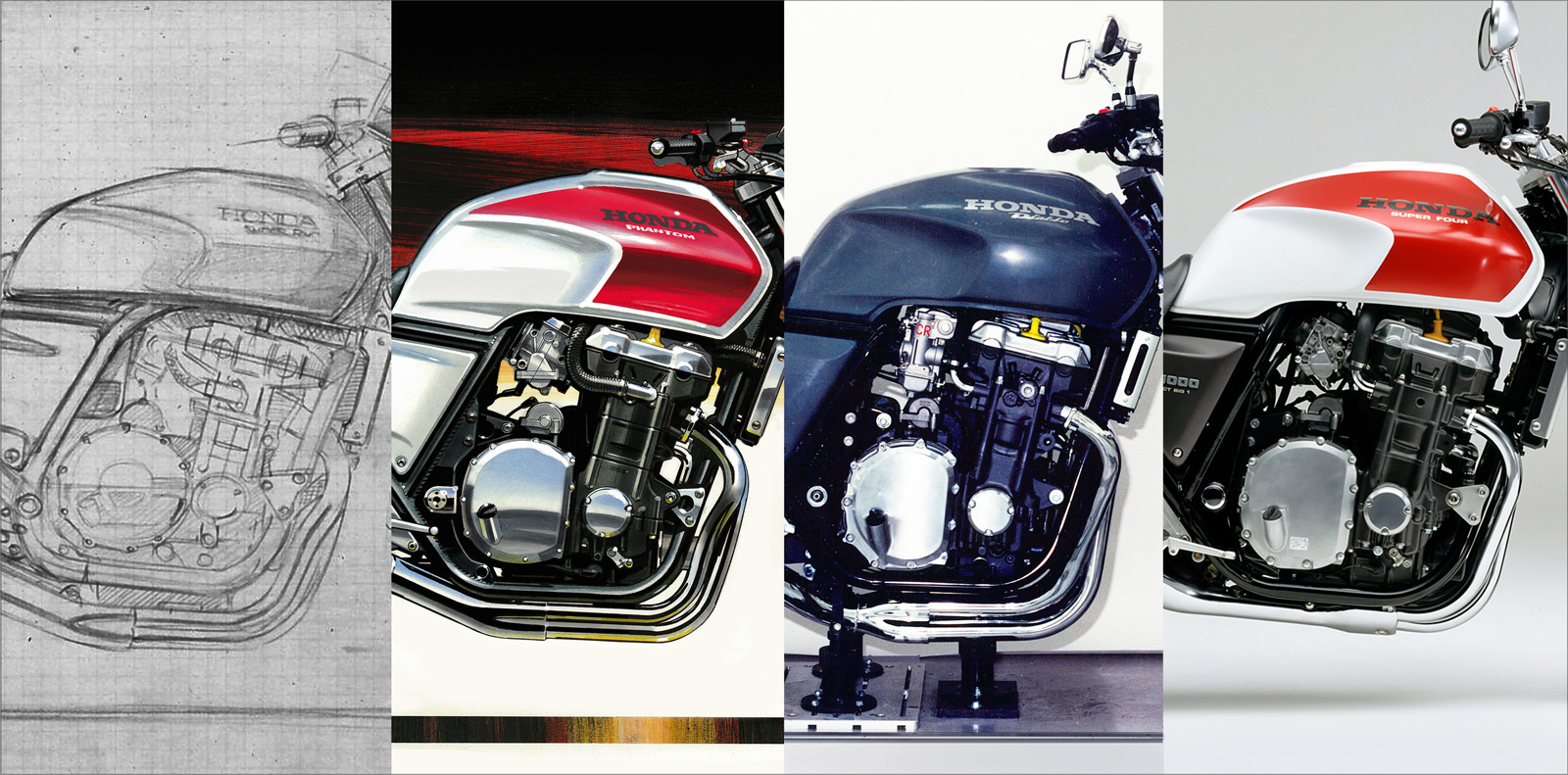 Pursuing the Kind of CB Motorcycle We Want to Ride
Pursuing the Kind of CB Motorcycle We Want to Ride
Project BIG-1, which started with the CB1000 SUPER FOUR released in 1992, continues to attract fans more than 30 years on. 2022 marks the 30th anniversary of the project celebrated by the limited releases of the CB1300 SUPER FOUR SP 30th Anniversary and CB1300 SUPER BOL D'OR SP 30th Anniversary editions. To commemorate the occasion, the associates involved in the development of the first-generation model gathered to share their thoughts on Project BIG-1.
 Kunitaka HaraModel ’92 ’98 ’03
Kunitaka HaraModel ’92 ’98 ’03
Large Project Leader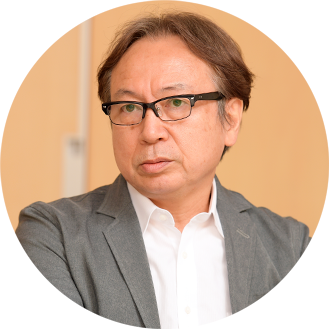 Toshiaki KishiModel ’92 ’03
Toshiaki KishiModel ’92 ’03
Designer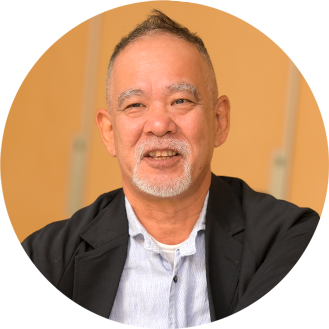 Tetsuya KudoModel ’05~
Tetsuya KudoModel ’05~
Test Large Project Leader
- [Part 1] Unprecedented impact redefines the value of big-sized motorcycles- 1992: CB1000 SUPER FOUR goes on sale –
- [Part 2] BIG-1 evolves and changes, creating an eternal concept of values- History is made with each new model –
- Photo Gallery
Unprecedented impact redefines the value of big-sized motorcycles
- 1992: CB1000 SUPER FOUR goes on sale –
![CB-1 [1989]](images/CB-1.jpg)
In the late 1980s the racer-replica boom that had excited all of Japan was beginning to fade, but the specifications symbolizing high performance and full-fairing sports models were still thriving.
Against this trend, Honda launched the 400cc CB-1 high-performance naked model in 1989. Since then, naked models from various companies reaffirming the universal form of motorcycles gained popularity. Building on the success of these models, Honda increased models with larger engines with a displacement of 750cc or even more than a liter, to attract riders who had resisted full-fairing racer replicas.
![CB1100F [1983]](images/CB1100F_1983.jpg)
The 1988 removal of voluntary regulations on the maximum displacement of motorcycles sold in Japan also triggered a boom in big-sized motorcycles.
At that time, “750cc” was not as attractive as one used to be.
1990 was a turning point in the history of the industry.
At the time, Honda’s lineup consisted of V4 models and the CBR series with full fairing at the top, and there were no standard big-sized motorcycles that would give the CB brand a strong impression. When I listened to the discussions of junior associates about motorcycles, all they talked about were reimported inline-four models from other companies, which angered me.
Indeed early experiences with inline-four models such as the CB750FOUR, CBX (1000), and CB1100R made us feel proud of Honda and Japan, and Project BIG-1 started from this kind of feeling.Kishi

Toshiaki Kishi, the designer of the first-generation CB1000SUPER FOUR (SF) (1992), recalls,
![CB1100R [1981]](images/CB1100R_1981.jpg)
“Project BIG-1 started as a design study of a motorcycle that I would want to introduce to the world.” The rough sketch was a CB-1 chassis mounted with a CB1100R fuel tank. Although the CB-1, a 400cc naked model, was developed to offer the best handling in its class, it was unable to compete in terms of sales with naked models that came later from other manufacturers.
Koji Nakano, who was in charge of design at the time, saw the CB-1 and said, “I like it! The idea of large inline-four motorcycles like this grew from there, and I was allowed to develop an informal sketch based on the CBR1000F engine in my spare time.Kishi
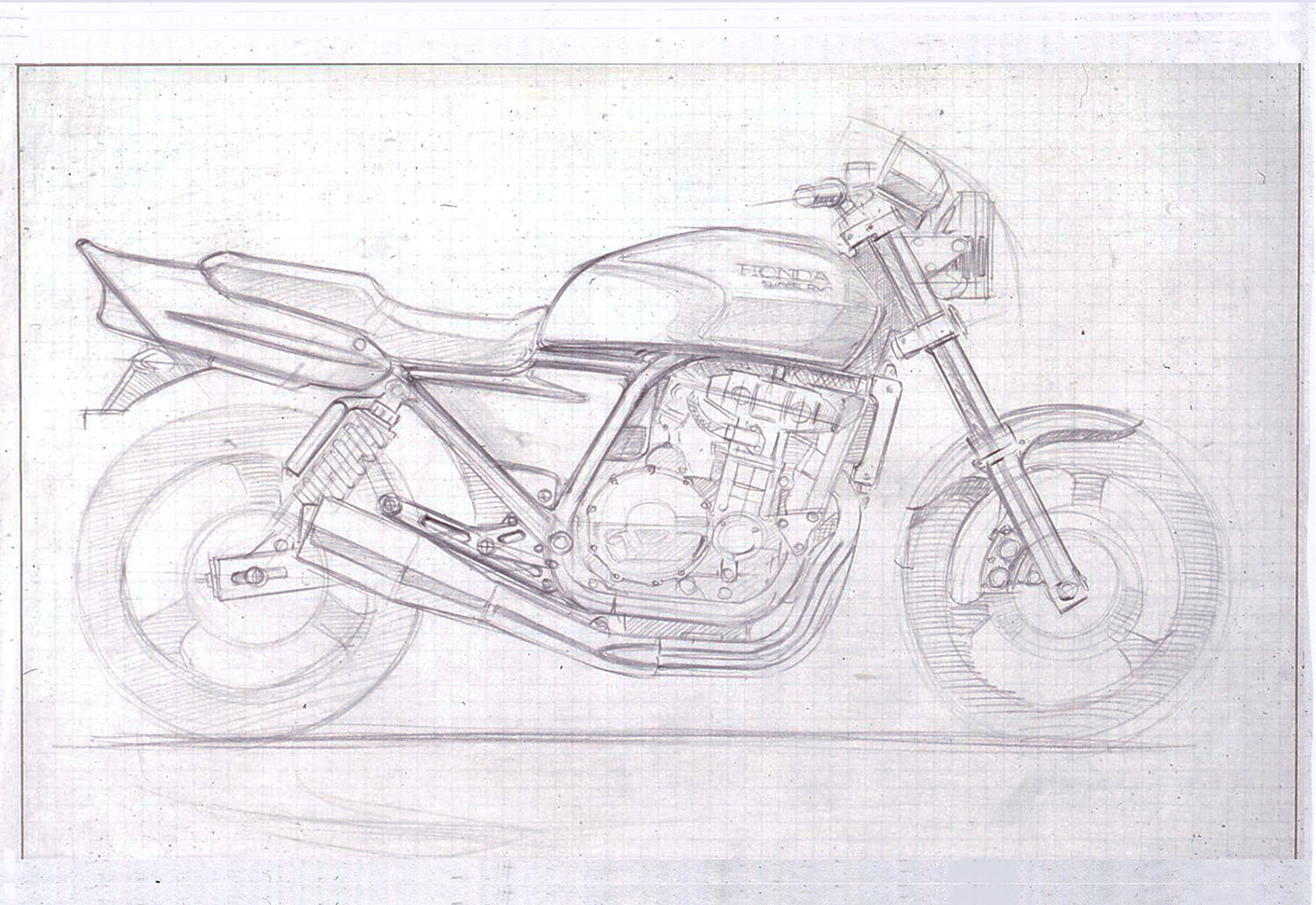
A motorcycle rider told Nakano that “big-sized motorcycles are supposed to be valiant, and sound good. Honda has a lot of motorcycles, but I think it is mainly a 250cc and 400cc company.” This was a shocking view of Honda to Nakano who then shared his ideas with Kishi, leading to the design of a new inline-four big-sized motorcycle.
Nakano was one of the people who felt strongly that we needed a big-sized motorcycle that would fit the times. So, even though it was an informal project, we began considering a clay model in a prime location in the design office, so that many developers would see it, and we tried to create momentum within the company. As I had planned, the number of internal supporters gradually increased.Kishi
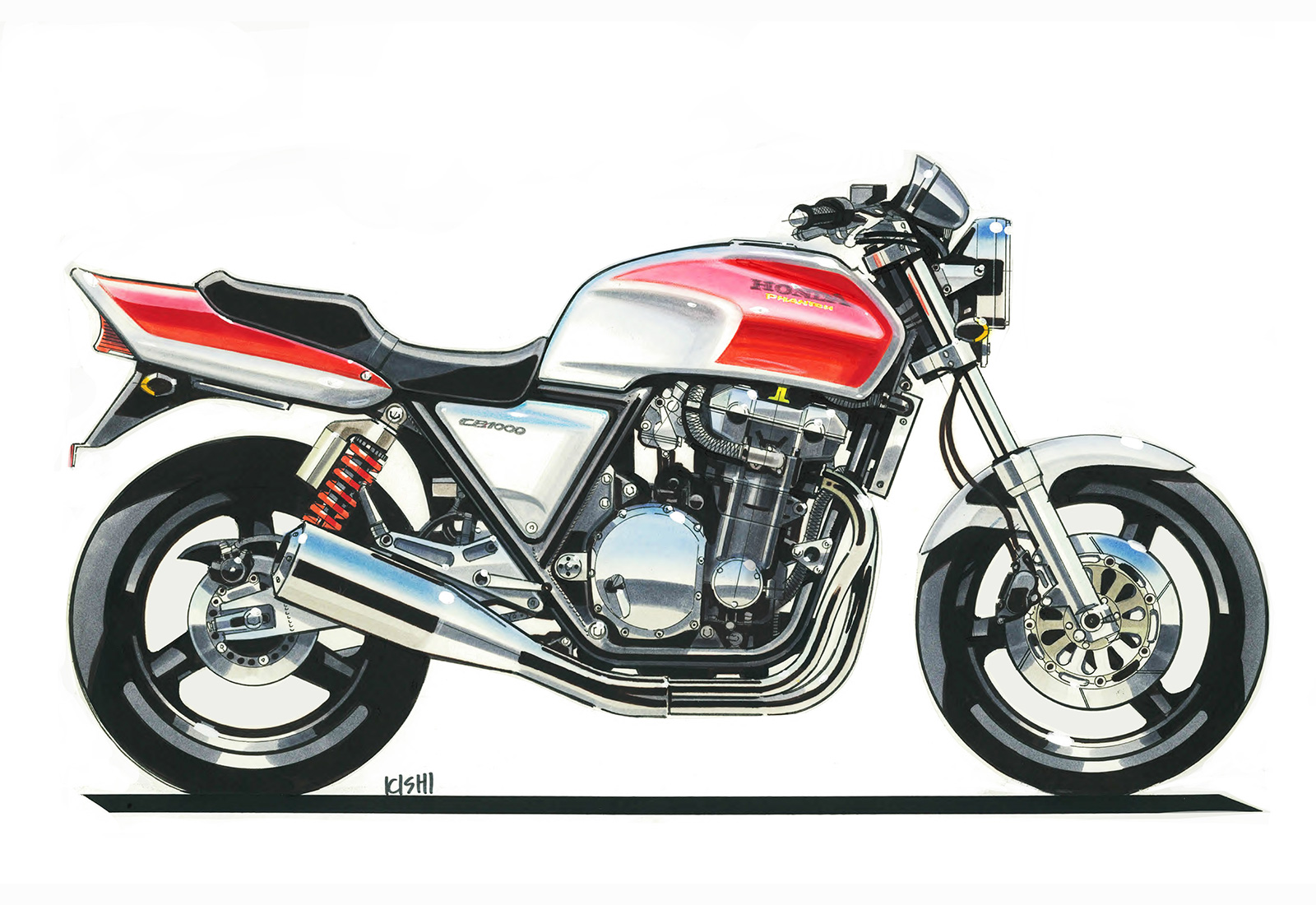
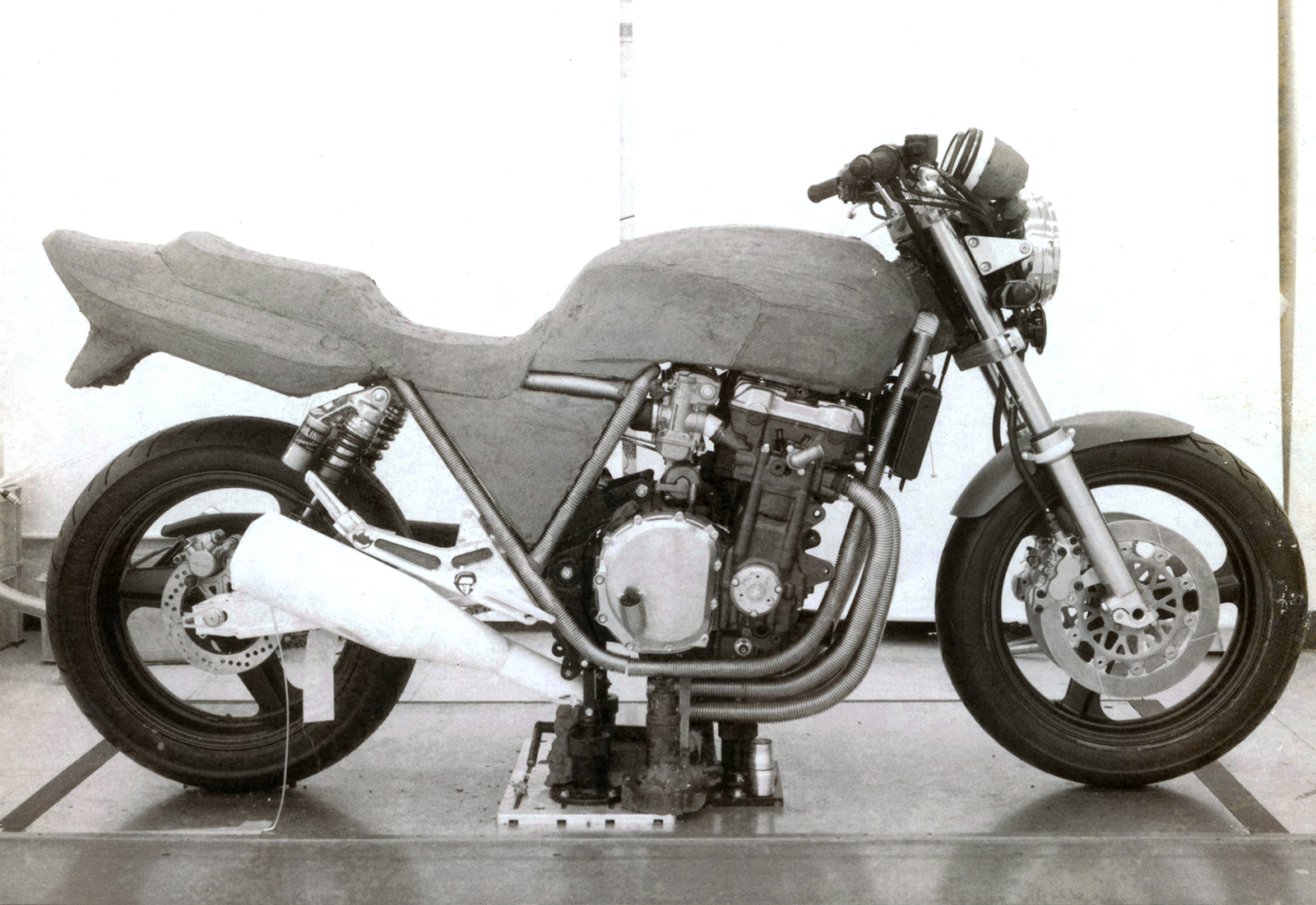
Kishi saw beauty in the upright, rugged shape of the CBR1000F engine’s cylinders, which were hidden under the fairing, and felt that with some modifications, it could be a naked model engine. Nakano and his team believed that they were not dealing with a 750cc engine, but with a used large reimported motorcycle. The resulting clay model was big, wearing 18-inch tires.
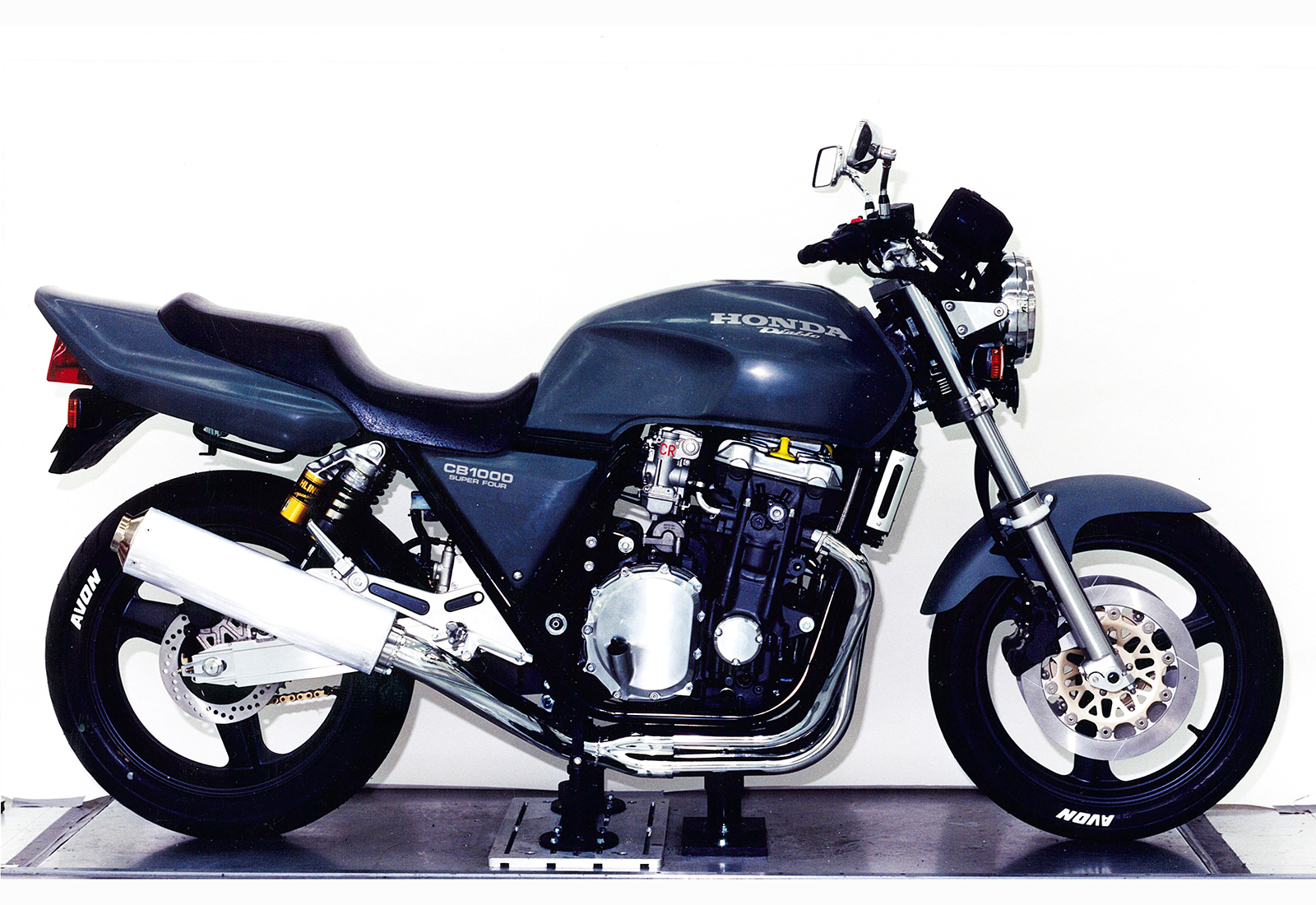
At the time, the wheelbase was 1520 mm, unbelievably big for the time, and the new Honda big-sized motorcycle had an unmatched aura. This clay model was proposed internally as a so-called bottom-up project from the development side. The proposal was rejected from a sales point of view, as they viewed a dual-shock model with no new technology that cannot be expected to sell in Europe and the United States.
I was frustrated. The board members who saw the model told us not to leave it on display forever - because we were done with it, but we were confident with it and we wanted to release it somehow, so we hid the clay model in a small room in the design office and continued to work on it.Kishi
The first sketches using the CB-1 body also led to the birth of the CB400 SUPER FOUR (SF), and it is because of this CB400SF that the CB1000SF was able to be released to the world.
![CB400 SUPER FOUR[1992] final drawing](images/CB400SF_sketch.jpg)
final drawing
The CB400 SUPER FOUR constitutes the ‘Project BIG-1’, positioned as the successor to the CB-1 as a domestic-only model in the early 1990s when it was supported by strong demand. It was launched earlier, in March 1992, with the CB1000 SUPER FOUR as the image leader. It has been at the heart of the 400cc class as a classic machine that embodies the CB's character, with the high performance and emotion of the straight-four at its fingertips. Like the CB1000 SUPER FOUR, it has evolved tirelessly and will be discontinued in 2022.
According to Kunitaka Hara, LPL (Large Project Leader).
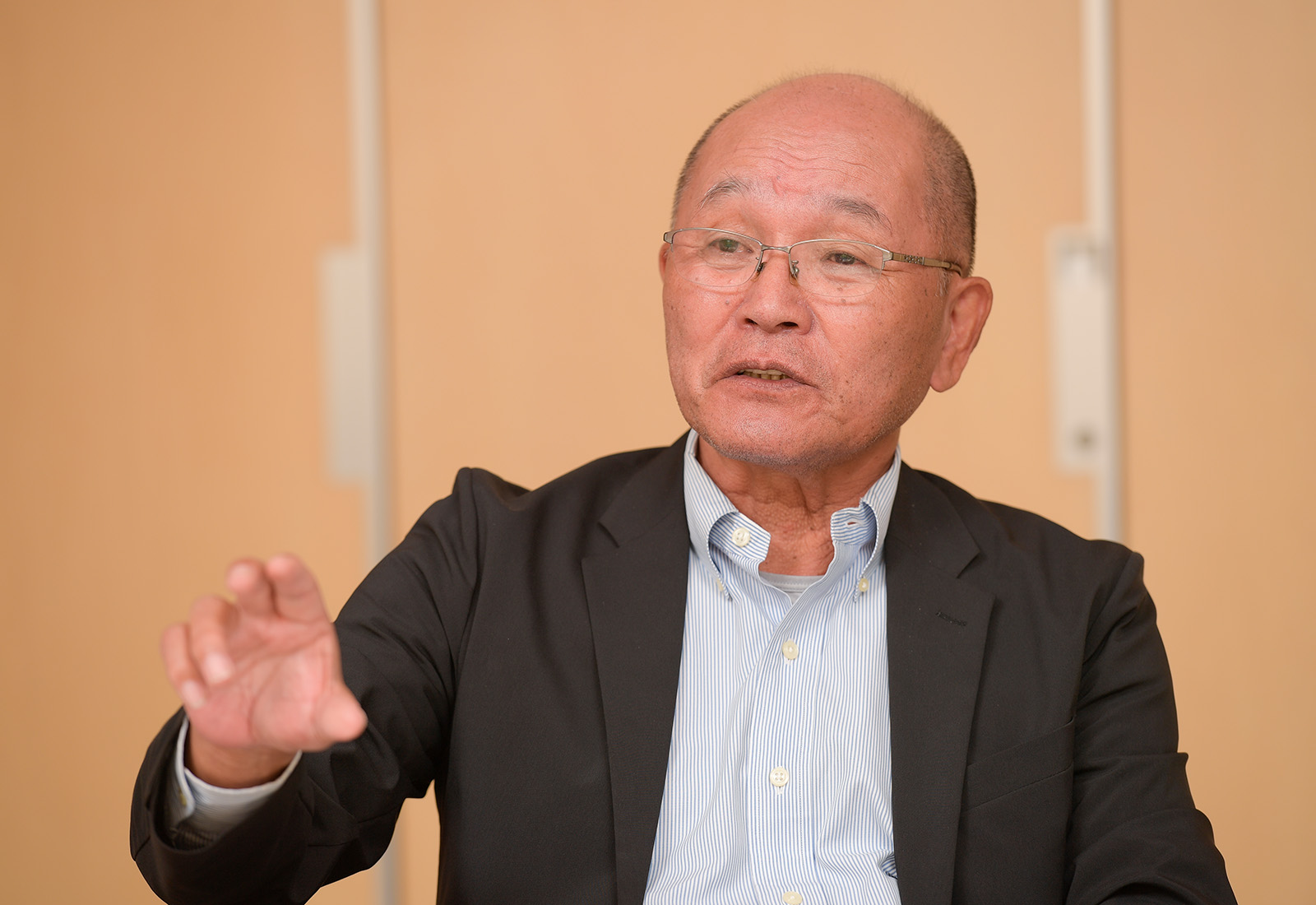
When I saw the clay model, I thought, ‘This is huge! It's awesome!’ I also felt that there were no motorcycles for adults to ride these days.
So, if the company was against it, we would ask our customers directly, and we decided to exhibit the CB400SF, which was already under development, at the Tokyo Motor Show as a reference model to promote its image. Everyone’s eyes were locked on the BIG-1 at the show - the same reaction as when the CB750FOUR was introduced in 1968. The way customers looked at it was different.Hara
I could feel the enthusiasm of the visitors. I was deeply moved to see that our customers shared our passion.Kishi
The imposing size of the motorcycle, literally “Big-1,” was accepted because of its size and powerful impact.
I was in the design room every day, talking about what kind of motorcycle it should be. I would say things like, ‘I like the ride, like BOOM,’ or ‘The fuel tank is wide, so it feels like WHOA,’ and I’d make sounds and say whatever I wanted. I wanted it to be a motorcycle with real character and grunt.
The CB750FOUR K0 was my first contact with the CB, and for me, the CB was an inline 4-cylinder model with an attitude that said, ‘Ride me if you can.’ I thought that the joy of riding a motorcycle was to feel awe toward it and yet try to master it.
That’s why I wanted to keep the 18-inch tires that the designers were so insistent about. Tire size is a major factor in determining the size of a motorcycle’s body. At the time, only Avon in the U.K. was making 18-inch tires for large motorcycles, and there was a lot of opposition to using 18-inch tires. However, I pushed ahead, as ‘Honda is a company that takes on challenges without fear of failure.’Hara
Tetsuya Kudo, who at the time was in charge of testing V4 and other completed motorcycles, and later worked on the CB1300SF, describes the shock he felt when he rode the 1000SF.
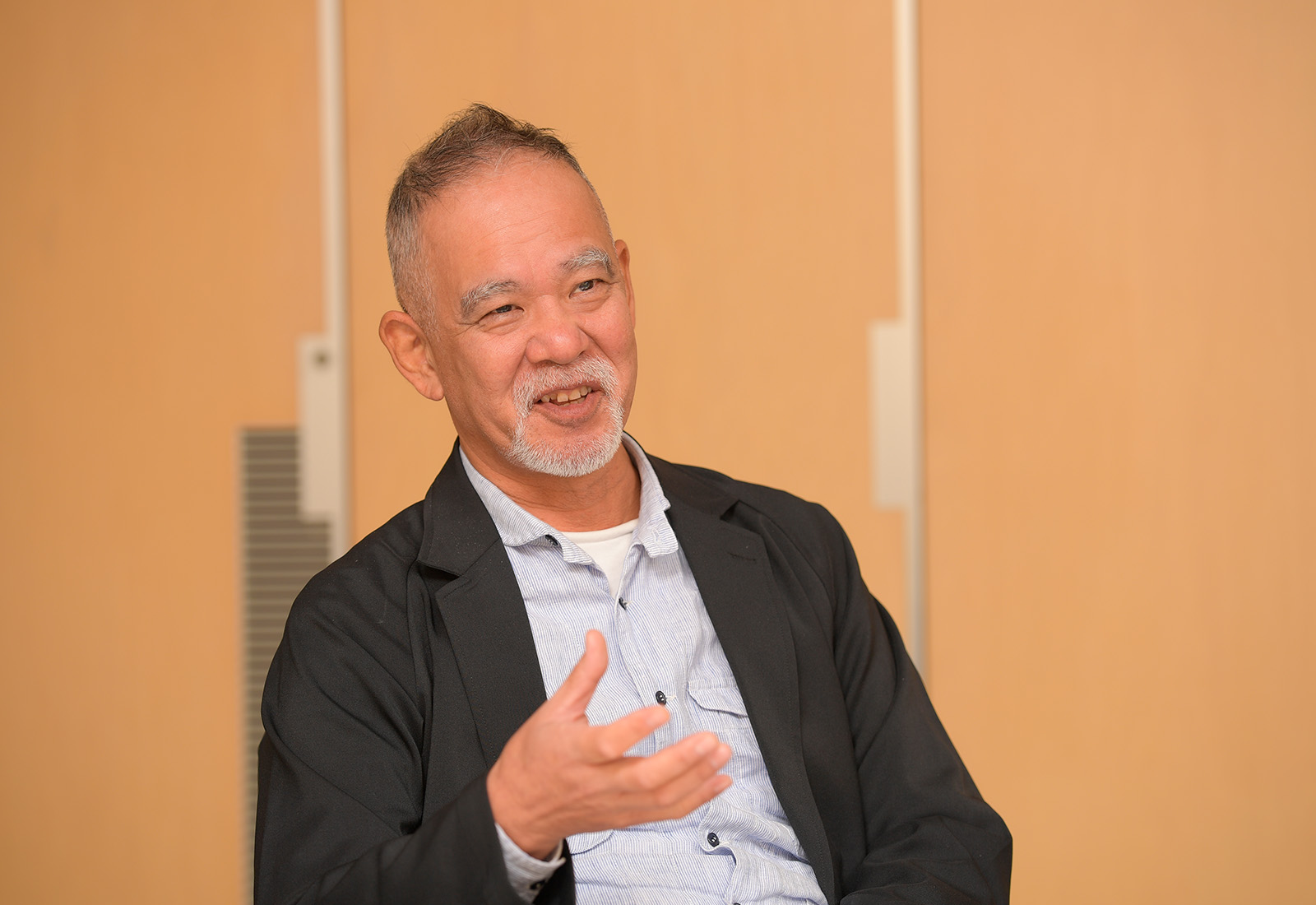
At that time, Honda's sports model lineup consisted mainly of CBRs and V4s with fairings, and there was no CB as a naked model. Out of all the CBs, I ended up with the CB750FOUR K2, which I liked and rode, but when I first saw the 1000SF, I thought, ‘What are they going to do with a motorcycle this big?’ But I understood intuitively what Hara meant by ‘a weighty ride.’Kudo
![CB1000 SUPER FOUR [1992]](images/CB1000SF.jpg)
When we started with the clay model, it was called Diablo, but as development progressed, we agreed, ‘This is huge! This is a Big One!’ Anyway, we liked the shape and color of the fuel tank Kishi designed, and we didn’t even consider competing models out there.
I think there is a sensuality not only in performance but also in shape. At the time, I used the term emotional performance, but in areas that could not be measured numerically, I proceeded based on what I felt it should be like and how I wanted it to be. At that time, my sensitivity was already the CB itself.Hara
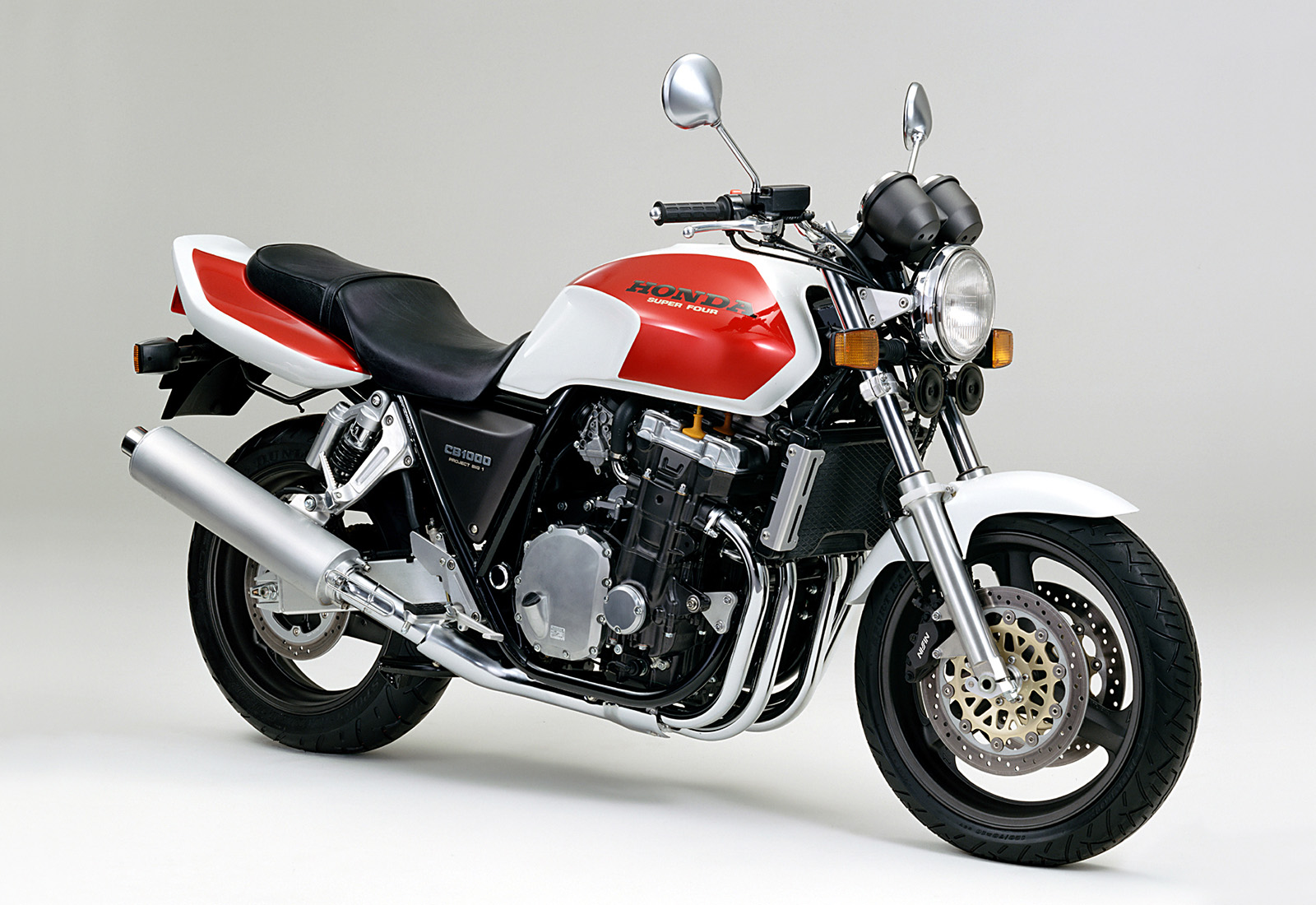 Part 1Unprecedented impact redefines the value of big-sized motorcycles- 1992: CB1000 SUPER FOUR goes on sale –
Part 1Unprecedented impact redefines the value of big-sized motorcycles- 1992: CB1000 SUPER FOUR goes on sale –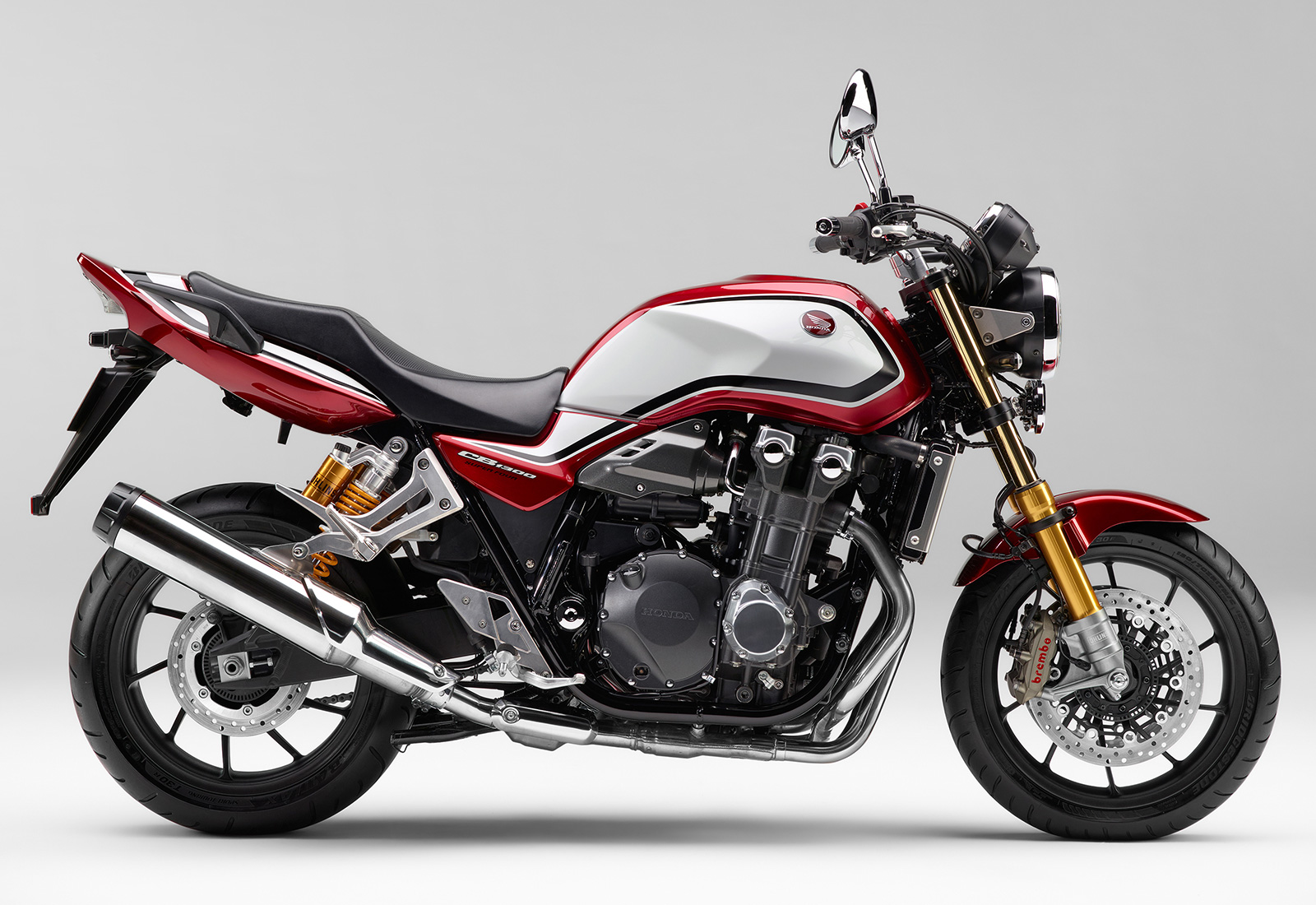 Part 2BIG-1 evolves and changes, creating an eternal concept of values- History is made with each new model –
Part 2BIG-1 evolves and changes, creating an eternal concept of values- History is made with each new model –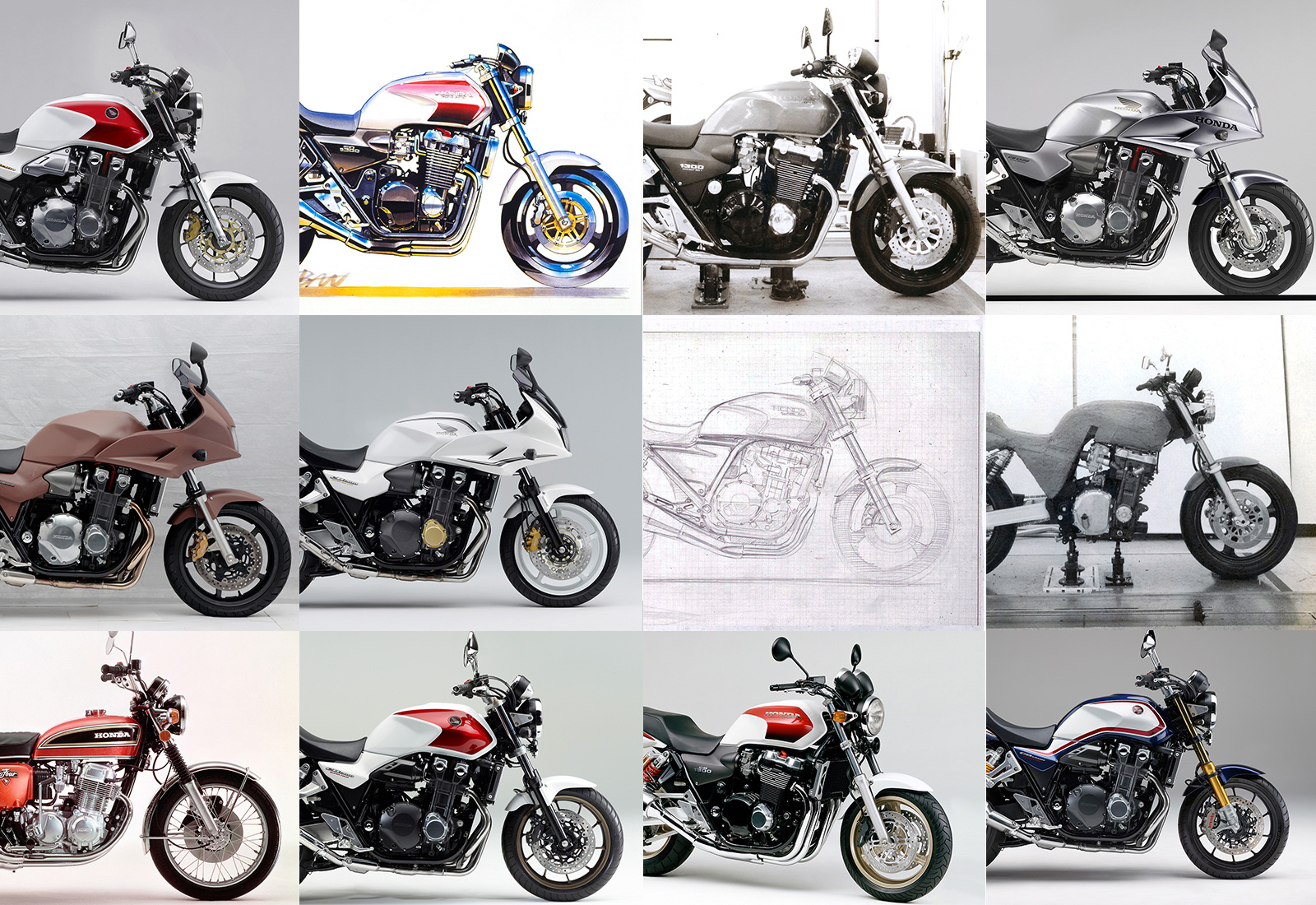 Photo Gallery
Photo Gallery